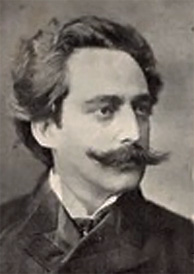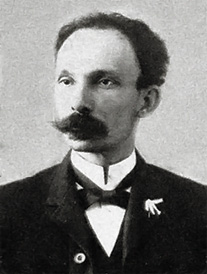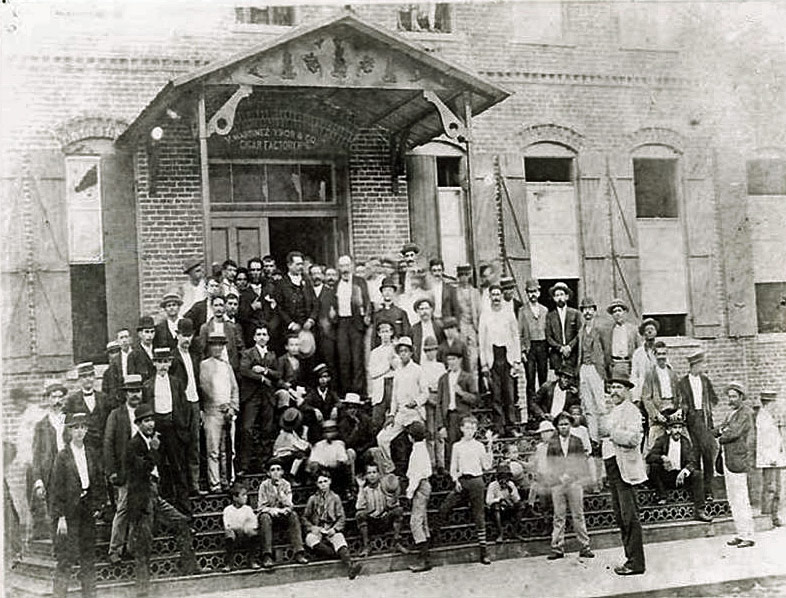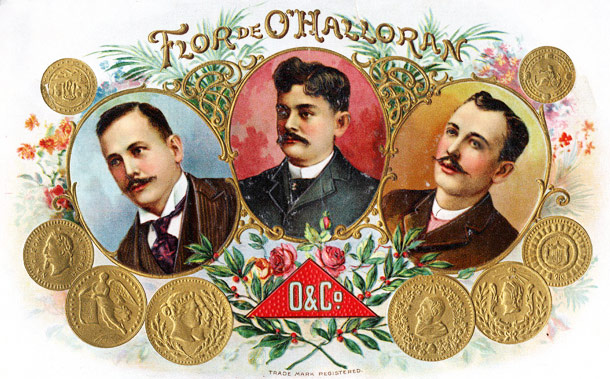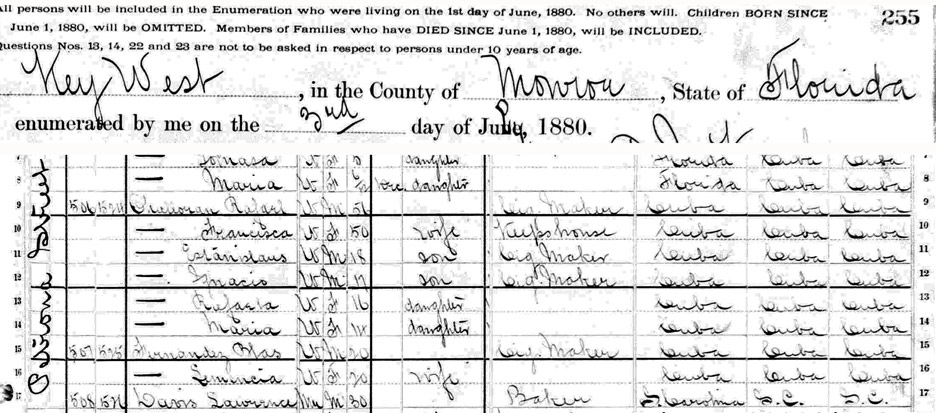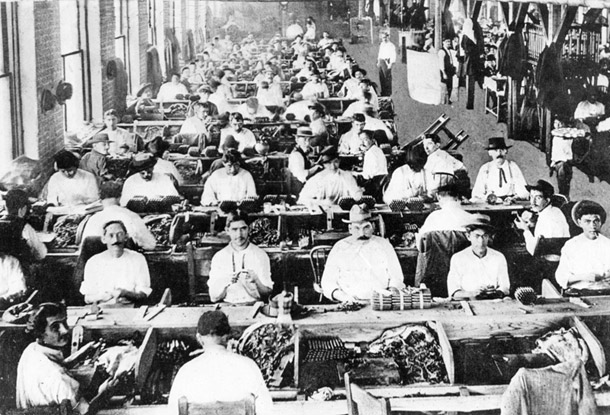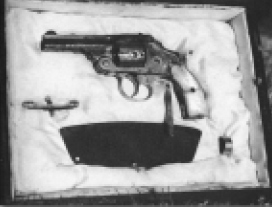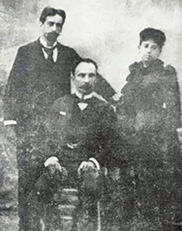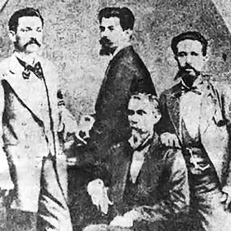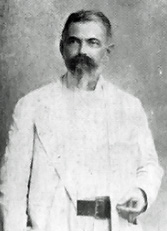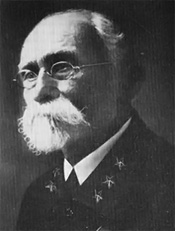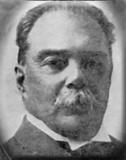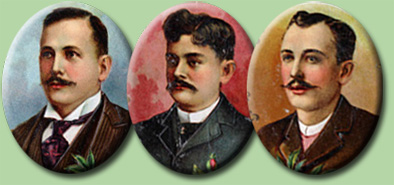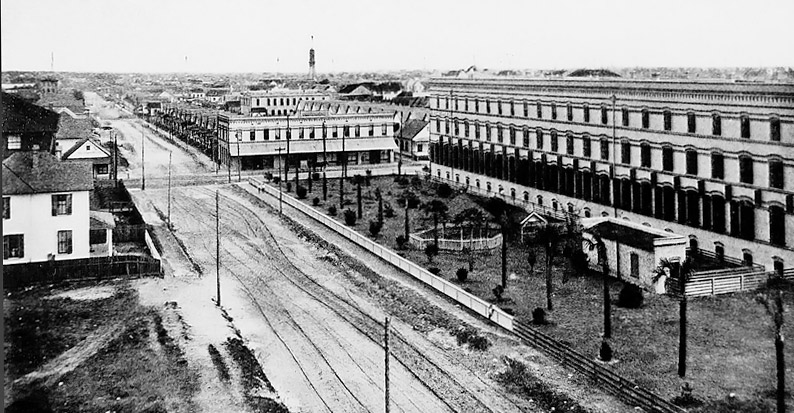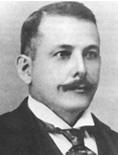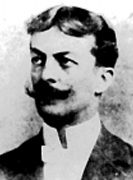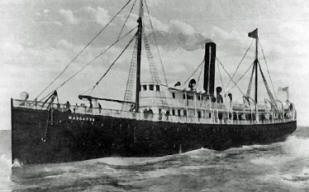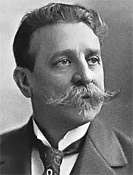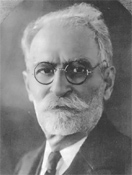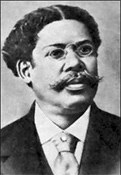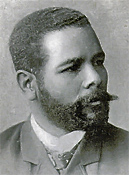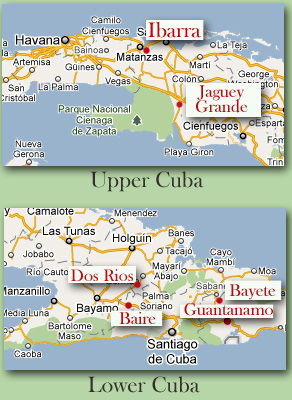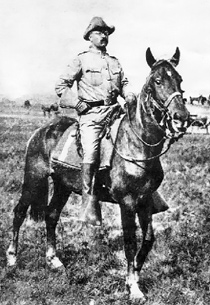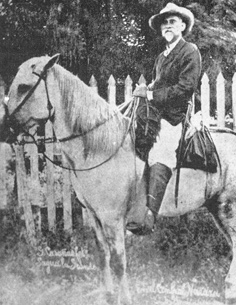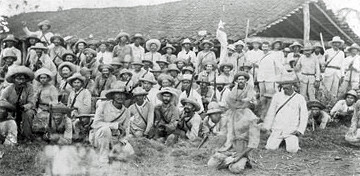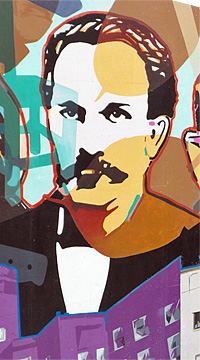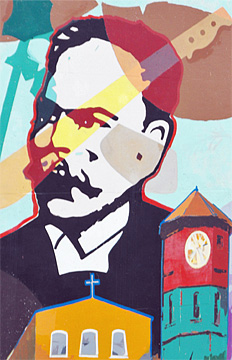Fernando Figueredo y Socarrás,
The First Mayor of West Tampa
|
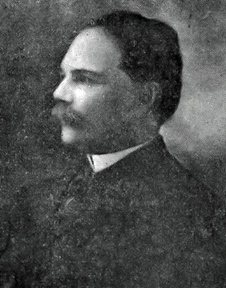 |
|
|
Fernando Figueredo |
|
Fernando Figueredo y Socarrás was born on February 9, 1846, in Puerto
Príncipe, Cuba, the son of Bernardo Figueredo y Tellez and Tomasa Socarras y
Varona. Fernando grew up in Bayamo, but was sent to school in Havana in
1862, then to the Troy Academy of Civil Engineering in Hudson, New York, in
1864. In Cuba,
Carlos Manuel de Céspedes and others were plotting revolution and Fernando,
through letters from his father and discussions with other students, followed the
events in Cuba with great interest. In 1868, he left Troy and joined the rebels
in Bayamo, eight days after the start of the Ten Years’ War.
In 1871, while he was with Céspedes in the midst of the Sierra Maestra
mountains, he met Juana Antunez y Antunez, the daughter of Joaquin Antunez and
María Caridad Antunez, and in November 1874, they were married by a notary
public attached to del Ejército Libertador de Cuba (the Cuban Liberation Army).
Shortly afterwards they had their first son, who spent the first three years of
his life in the jungles and mountains of Oriente, while his father fought the
Spanish.
| Fernando Figueredo y Socarrás held several positions of importance in the
revolutionary cause, including secretary to the President of the Republic in
Arms, Carlos Manuel de Céspedes. When Céspedes was deposed in 1873, Figueredo
became Jefe del Estado Mayor de la Primera División del Primer Cuerpo del
Ejército de Oriente (Chief of Staff of the 1st Division of the 1st Corps of the
Army of Oriente), under Mayor General (Major General) Manuel de Jesús Calvar. He
was, next, Secretary to the Cabinet of the Third Presidente de la República de
Cuba en Armas, Juán Bautista Spotorno until 1876, when he, Figueredo, was
elected a member of the Cámara de Representatives (House of Representatives) por
Oriente. By the end of the war he had risen to the rank of colonel.
Figueredo was Secretario del Gobierno Revolucionario (Secretary of the Revolutionary
Government) and miembro del Provisional (?) después de la protesta de Baraguá
(after the Protest of Baragua) el 14 de Mayo de 1878, and following La Guerra
Chiquita (the Tiny War) in 1878, went with his family into exile, first to the
Dominican Republic, and in 1881, to Key West. |
 |
| |
Carlos Manuel de Céspedes |
| In the Dominican
Republic, in the town of Puerto Plata, Fernando's son, who had
survived three years of war in Cuba, died. Soon after, on July 1,
1878, Juana gave birth to their second son, Bernardo Figueredo y
Antunez, and Fernando asked his friend, the Monsignor Merino,
Archbishop of Santo Domingo, to baptize the new baby. Merino agreed,
but then it was discovered that the church wouldn’t recognize the
marriage of Fernando and Juana that had taken place four years earlier
in the Cuban manigua. The solution, said Merino, was that he should
remarry them and that, for good measure, they should also be married
by a Dominican civil judge. This was done and Fernando wrote about it
in his biography many years later as "mis tres bodas" (my three
weddings).
After the
demise of a rebellion in Cuba in 1880, many rebels went to Key West, and
during the next five years the Cuban population there increased significantly;
this migration was attributable mainly to the recovering cigar industry. Among
the political exiles who arrived, giving the local leadership additional
prestige, was Fernando Figueredo, who with Maceo and others, had rejected the Zanjón Pact and had continued fighting
until surrender became inevitable.
|
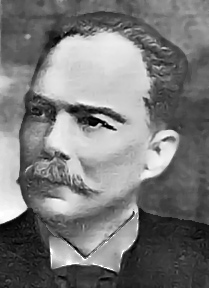 |
| |
State
Representative Fernando Figueredo, 1885 |
| In 1881, Fernando, Juana, and Bernardo sailed for Key West, and in 1884,
Fernando became a US citizen and was soon working as a clerk for the US Customs
Service. Along with
Lamadriz and Poyo, Figueredo became an influential leader in the community. Amazingly, that same year he was elected to the Florida House of
Representatives from Monroe County. He became active in Key West community
affairs and was elected superintendent of public instruction for Monroe County,
but “consistently worked on behalf of Cuba Libre.” In January, 1892, José Martí
and others visited Fernando’s home in Key West and there founded the Cuban
Revolutionary Party.
In Key West, there was
not a single member of the Cuban community who did not look forward to a new
revolutionary movement against Spain, and an organization was maintained for
that purpose. Messrs. Lamadriz, Poyo and Figueredo were accepted as the
leaders of this idea. They organized themselves into political groups called
clubs, which were given patriotic names. Every Cuban was expected to belong
to one of these clubs, and men, women and children were enrolled in this
singular organization. All the clubs sprang from the central committee of
Messrs. Lamadriz, Poyo and Figueredo. Even the manufacturers were organized
into a political club. Some of the most noted leaders of the former
revolution were ever ready to land an expedition in Cuba and start a new
revolution.
|
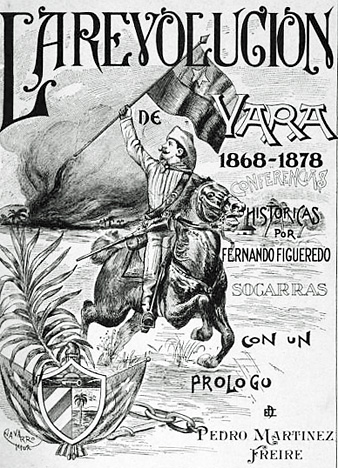 |
|
| |
|
Figueredo presented a
series of lectures at San Carlos describing his experience during the Ten Years
War. These were subsequently published as "La Revolución de Yara", and provide
one of the classic accounts of that struggle. He also founded a short-lived
newspaper, "La Voz de Hatuey", whose militancy prompted complaints from the
Spanish ambassador in Washington, and criticism from the local Anglo press that
condemned what it considered the weekly’s advocacy of violence against loyal
Spaniards in Key West. Figueredo’s activities were clearly calculated to keep
the issue of Cuban independence in the public arena.
In 1893, Fernando took a position as a bookkeeper with the O’Halloran Cigar
Company in Key West and the next year moved with the firm to West Tampa. Soon,
his home at 404 Main Street became the meeting place and office of the Cuban
Revolutionary Party. In Tampa, Fernando was "subdelegado del Partido
Revolucionario Cubano y agente de la República de Cuba" (subdelegate of the
Cuban Revolutionary Party and agent of the Republic of Cuba).
On January 6, 1895, when the Cuban Junta in New York decided to start active
hostilities against the Spanish authorities on the island, the instructions were
delivered to Fernando in West Tampa for transmission to Cuba. Fernando arranged
for the message to be concealed inside a special panatela cigar which was
delivered by courier to the leaders in Cuba. On February 24, 1895, the Cuban
Revolution began.
The successful development
of the area of West Tampa attracted the attention of the city of Tampa, which
had incorporated Ybor City in 1887. Although the City of Tampa made several
efforts to annex West Tampa, Hugh Macfarlane led opposition to a merger and West
Tampa chose to remain independent. On May 18, 1895, a bill passed the state
legislature creating West Tampa as a separate municipality. At that time the
city already had a population of 2,815.
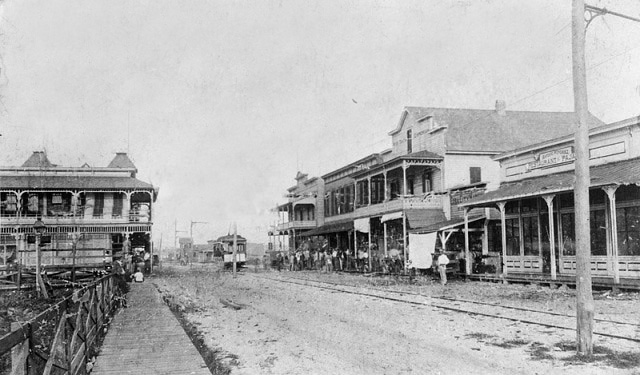
Main Street in West Tampa, circa 1891
In June 1895, Fernando
Figueredo was elected as the first mayor of West Tampa and later that same
month, when Tampa became headquarters for the Cuban expeditionary forces under General Emilio Nuñez, he was named second in command with the rank
of colonel. Fernando tirelessly recruited men and money,
leading numerous collections for the Cuban cause in West Tampa factories.
Volunteers started pouring into Tampa from all over the US. In 1896
Figueredo and Cuban patriot leader Martin Herrera spoke at a benefit ball for
Cuban refugees in Cespedes Hall in Tampa. The Cuban population in Tampa’s Ybor
City and West Tampa were strong supporters of “Cuba Libre” and when, in April
1898, the US declared war on Spain, Tampa served as the launching point for the
invasion fleet. Four months later, with the US victorious over Spain, many of Tampa’s Cubans
returned to their homeland but Fernando remained in West Tampa as chairman of
the West Tampa City Council.
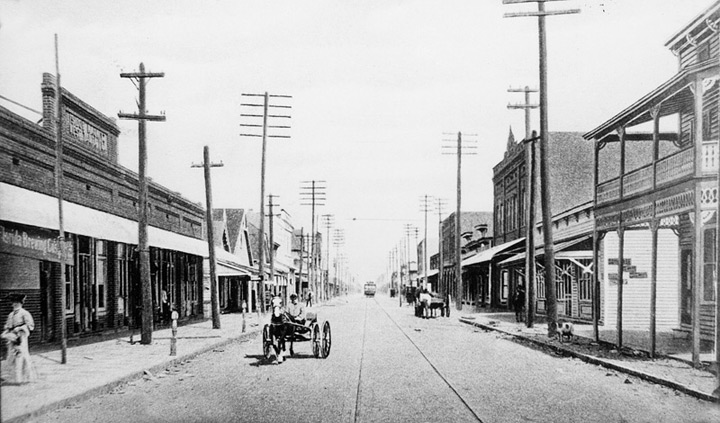
Main Street in West Tampa, 1895
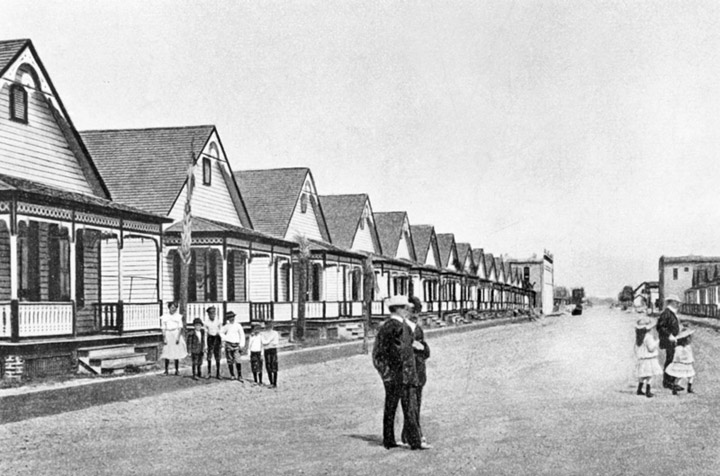
West Tampa houses, circa 1895
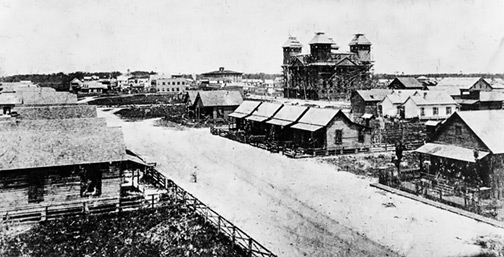 |
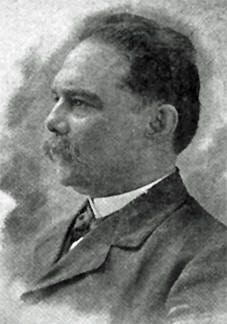
Fernando
Figueredo, around the time he was Chairman of West Tampa's City
Council |
| A view of West
Tampa's municipal center under construction, "Cespedes Hall", from the
Fleitas Cigar Factory on Fremont Ave., 1895. On January 26,1895,
work began on Cespedes Hall, a Cuban opera and clubhouse. It was built
on the corner of Main Street and Francis Ave. (later renamed Albany
Ave.) in West Tampa. The city of West Tampa bought Cespedes Hall in
November 1895, when the society was unable to finish it. After
completion it was used principally as a public school.
|
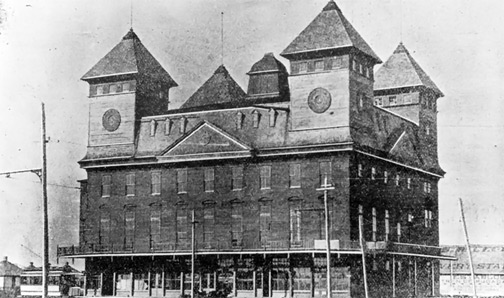 |
Fernando finally went
back to Cuba on December 27, 1898, as deputy collector of customs at
Cienfuegos. In March 1899, his family, who had remained in Tampa, joined him
in Cienfuegos, and in early 1900, he was appointed sub-secretary of the
interior, and moved to Havana. His "La Revolución de Yara", a history
of the Ten Years’ War, was published in Havana in 1902, and in May of that
year, he was appointed director-general of communications by new Cuban
president, Estrada Palma. |
| Cespedes Hall in
1897. In 1898, the building was used as headquarters for the
cigar maker Cuban volunteers of the Spanish American War.
Figueredo would march the troops to Cespedes Hall daily, where General
Lacret was in charge. |
|
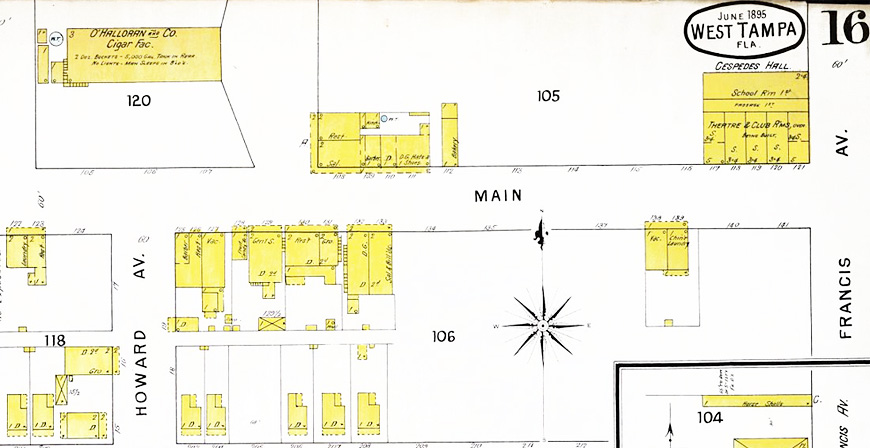
This 1895 fire insurance map of West
Tampa shows buildings on Main St. in the area between Howard Ave. and
Francis Ave. (Now Albany Ave.) The O'Halloran cigar factory sat in a
square in the middle of Howard Ave, which continued northward on the other
side of the factory. The small circle next to the factory is a water
tank, and the notation on the building states: "2 dozen buckets, 5,000 gal.
tank in rear, no lights, man sleeps in b'ld'g. In 1899, West Tampa
City Hall and fire station was built on the corner of Main St. and Francis
Ave.
Click here to see enlarged
images of the factory and Cespedes Hall. You can
view
this interactive map at the Univ. of Florida digital images.
By 1899, Cespedes Hall
had been demolished and West Tampa City Hall was being built in its place,
it was the first brick building in West Tampa. This 1899 Sanborn map
shows city hall was being built at the time.
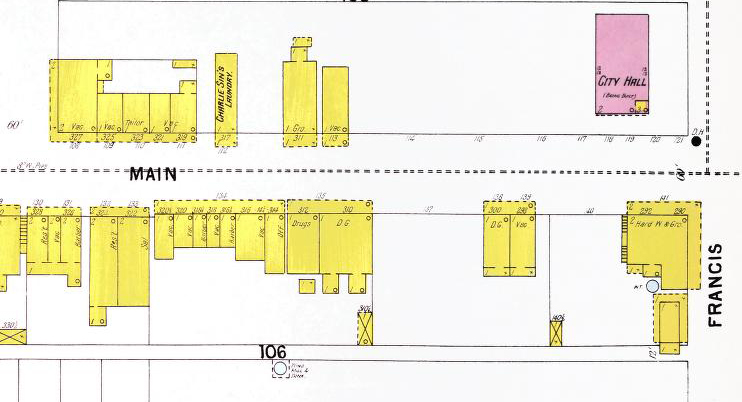
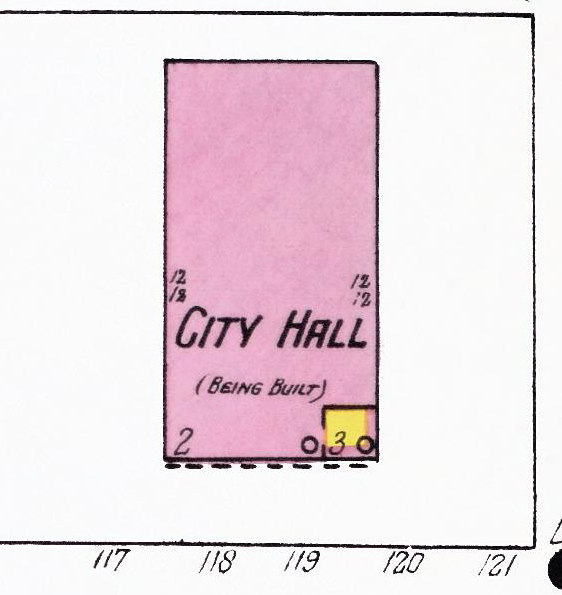
Close up of City Hall on 1899 map
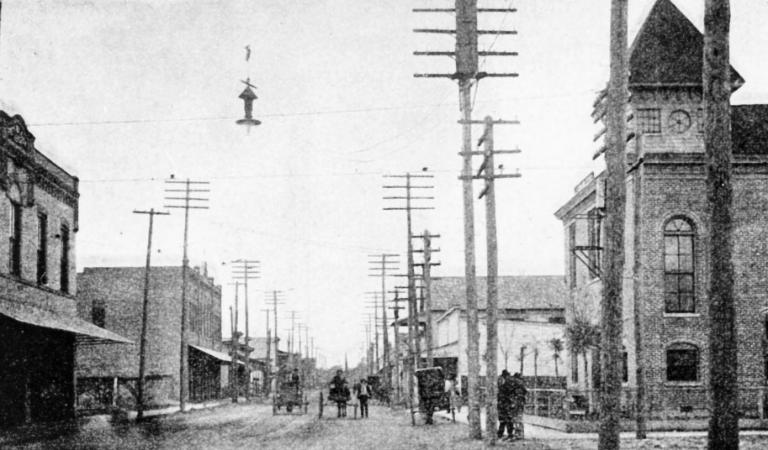
A view looking west on
Main Street, circa 1900, with City Hall on the right.
Photo from University of Florida Digital Collection where the photo is
dated as 1894.
Sanborn map evidence shows that this photo cannot be from before 1899.
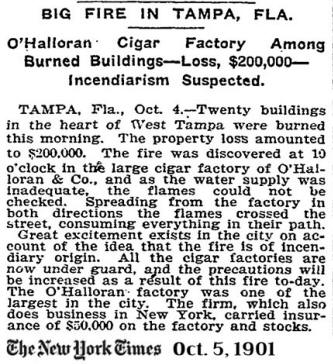
In 1901, a massive fire
destroyed the O'Halloran cigar factory and the buildings from Howard Avenue
to Francis Avenue (Albany), as a result of arson
during a workers strike. In 1902 the Fernandez Brothers opened a
factory here. This closed in 1909, and it burned down in May of that year.
In 1913, this became the site of the
West Tampa Public Library.
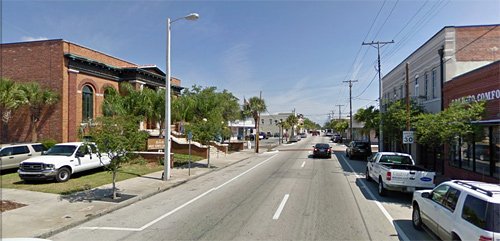
Next time you drive up Howard Ave.
from Main St. to Union St., remember, you're driving right through the
middle of where the O'Halloran cigar factory stood, and where the "cigar
that sparked a revolution" was rolled. The West Tampa branch library
on the left and the buildings across the street were built on this historic
site.
On April 4, 1904
Robert Mugge's
West Tampa saloon caught on fire. The building, located on Pine Street near
Howard Avenue, was quickly devoured by the hungry flames, and before
volunteer firemen arrived with their hoses reels, the blaze had spread
to nearby homes and businesses. Authorities say the fire could have been
contained to the initial area, but high winds from the northeast fanned the
flames southwestward across Howard Avenue and west down to
Armenia Avenue, consuming everything in their path,
including the
A.
Santaella cigar factory at 1906 N. Armenia. The Leopold Powell Company
on the northeast corner was spared due to the wind direction, but over 100
homes and 5 factories to the southwest were destroyed. All were
constructed of highly flammable wood except for one factory, which was of
brick. The high winds, lack of available water sources, and West
Tampa's inadequate fire fighting capability were all blamed for the
extensive damage. Losses were estimated to be $300,000.
Read about
this fire in detail from a fire insurance newspaper article from April 20,
1904.
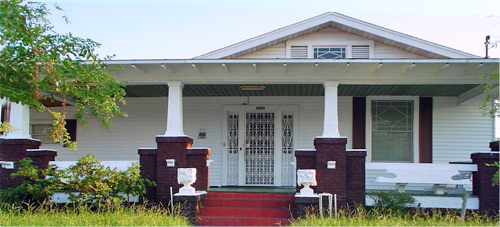
Estanislao
F. O'Halloran built this one and one-half
story frame home in 1904, at the present address of 2530 Main St., between
Armenia and Tampania. It was the residence of his brother, Blas F.
O'Halloran and is now the property of a member of the Maseda family.
Visit West Tampa at Tampapix,
"A Tour of Howard Avenue" and nearby sights
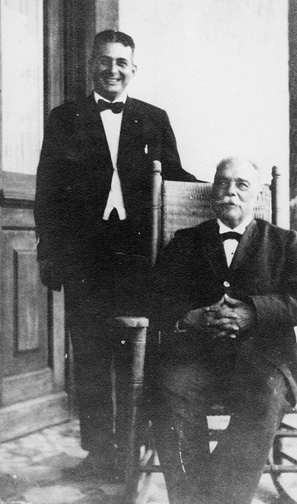 |
|
In 1919, at age 73, Fernando
Figueredo posed with Blas
Clemente Fernandez O'Halloran, the current mayor of West Tampa. Mayor O'Halloran
was a son of Blas Fernandez O'Halloran
who rolled the "cigar that sparked a revolution." This
photo was likely taken in Cuba. On Feb. 4, 1919, Blas obtained a
passport to travel to Cuba.
See images of his application. |
|
At noon on May 20th, 1902, the U.S. Military Governor of Cuba, Gen. Leonard
Wood, personally read President Theodore Roosevelt's letter declaring that the
U.S. occupation of Cuba was over. At the same time, M.C. Fosnes, Dir.
General of Posts for the U.S. administration, turned over all the postal affairs
to Col. Fernando Figueredo, first Postmaster General of Cuba. The U.S.
flag was lowered in Havana and the Cuban flag was raised.
In 1904, Estrada Palma appointed
Fernando Figueredo as Comptroller-General of the Republic of
Cuba, and in 1906, during the second intervention of the U.S. Government in
Cuba, the American governor- general, Charles A. Magoon, named Fernando
Treasurer-General of Cuba following the death of Carlos Roloff. He remained
Treasurer-General until the 24th of June, 1924, when he retired.
After his retirement, he wrote historical articles for newspapers and for the
Academy of History in Havana, until he died in Havana on April 13, 1929.
Fernando and Juana had nine children, Fernando, Pedro, Bernardo, María de la Concepción, Tomasa, María de
la Luz, Evangelina, Carmen, and Leonor. On March 17,
1951, the Cuban government issued three postage stamps bearing his portrait.
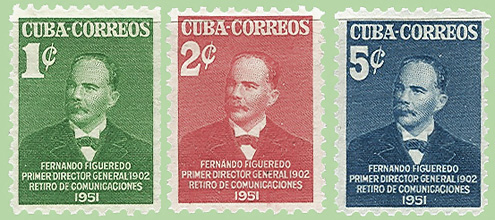
Fernando Figueredo y Socarrás was the first cousin, once removed, of Perucho Figueredo. that is, his grandfather and Perucho's father were brothers.
Fernando also had a brother named Felix Figueredo who was another major
figure in the Ten Years' War.
Perucho Figueredo, Lawyer, landowner, poet and musician, was
born in 1818, in Bayamo. In the 1860s, he was active in the planning of
the uprising against the Spanish which became known as the Ten Years' War. In
1867, he wrote La Bayamesa, which, today, is the national anthem of Cuba. He
fought in the Ten Years' War as a general under the command of Carlos Manuel de
Céspedes, but in 1870, was captured by the Spanish and was executed in Santiago
de Cuba on August 17, of that year.
Information Sources
The
Cigar That Sparked a Revolution by Tony Pizzo
Gonzalo de Quesada
History of Cuba
Cuban Newspapers, "Key West - The Old and the New"
The Heroes
Cuba's Freedom Figher, Antonio Maceo
The Petrucho Figueredo
Page
Tampa Cubanos: race, class and identities
Florida
Historical Society
In Darkest Cuba by N. G. Gonzales
Centros de Hoja, stamp collection of Robert Littrell
Tampapix Home
